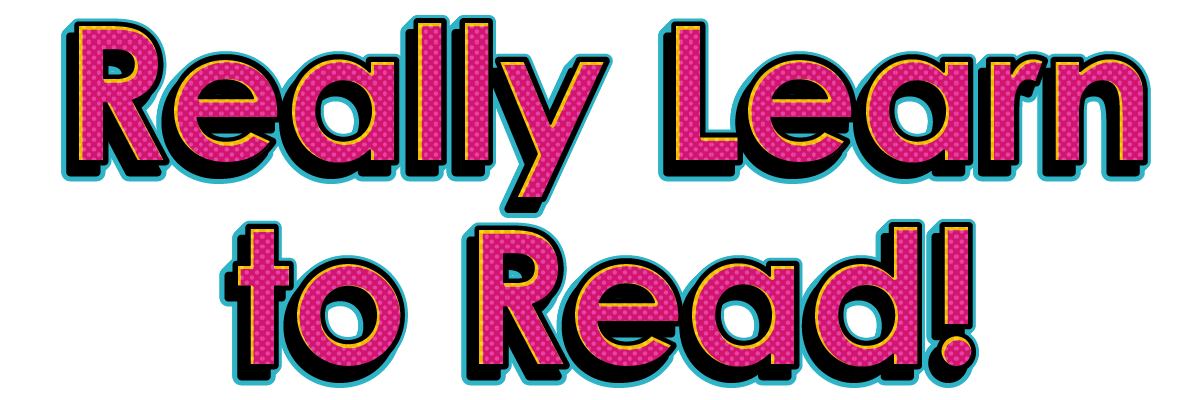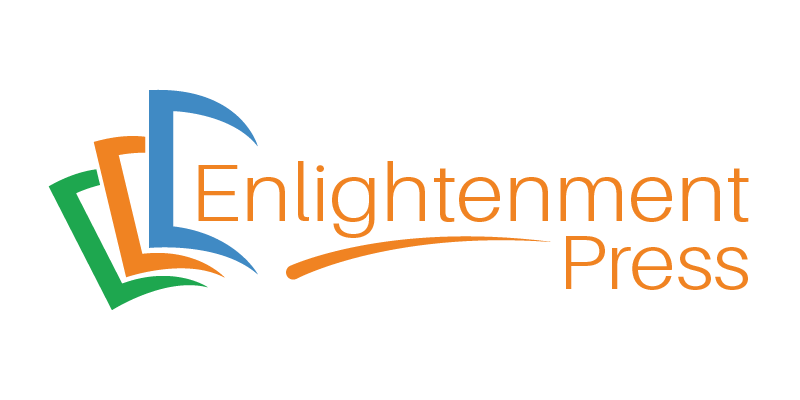Short e – Book 5 of 5

Book 5 – Short e focuses on Grades 4-7 reading levels to equip learners with critical literacy skills that promote self-confidence and success throughout their school years and in life. This reading activity workbook is the last of the Short Vowels Series with many word families and sight words previously learned in Short a – Book 1, Short i – Book 2, Short o – Book 3, and Short u – Book 4. Learners create short e word families, learn new sight words, read silly poems and interesting stories, engage in enhancement activities, and have fun with creative drawings.
Book 5, however, challenges readers to acquire more sophisticated vocabulary and comprehend more complex texts. All lesson stories are factual and true, based on informational texts about science, history, significant people, and unusual events. The importance of each lesson is twofold- students are practicing reading skills while also learning history, science, and culture! Readers who complete Book 5 will have demonstrated reading fluency in decoding specific vocabulary found in informational text, been able to comprehend these sophisticated texts meant for instruction, and skillfully analyzed their complex text structures. Comprehension skills for making inferences, drawing conclusions, and making predictions are practiced. Readers become deeper thinkers as they continue to evaluate the author’s purpose or suggestions, judge the intention of the text, and form an opinion of its importance to self and others
Upon completion of the Short Vowels Series, followed by the Long Vowels Series, readers will have a deeper understanding and appreciation of the value of reading, writing, and understanding English – the language most spoken around the world.
Student Edition
Make Words
At the start of each lesson, readers combine a variety of beginning consonants (onsets) to short e endings sounds (rimes) grouped in phonetically rhyming families. The onset is written next to the rime if the learner determines that the sound is a word. This fun game engages learners to make as many real words as they can by connecting these smallest units of sounds. This activity also builds self-confidence in reading new words when recognizing the same short e spelling patterns from rhyming word families and transferring their phonetic sounds. This skill increases reading fluency, the fundamental and valuable connection that enables readers to focus on comprehending what they are reading, as opposed to being preoccupied with decoding the words.
Goofy Poems
In the second activity, learners read four poems integrated with words from Make Words and new sight words presented in a dotted box. The poems are funny, yet important in giving needed practice in decoding the sounds of the different short e word families. Familiarity in recognizing the word patterns builds reading confidence and generates reading fluency, which, in turn, fuels the ability to better comprehend sentences and paragraphs. Additional rhyming words not listed in Make Words are underlined in the poems to help readers recognize short e vowel groups, transfer the sounds, and successfully read new words.
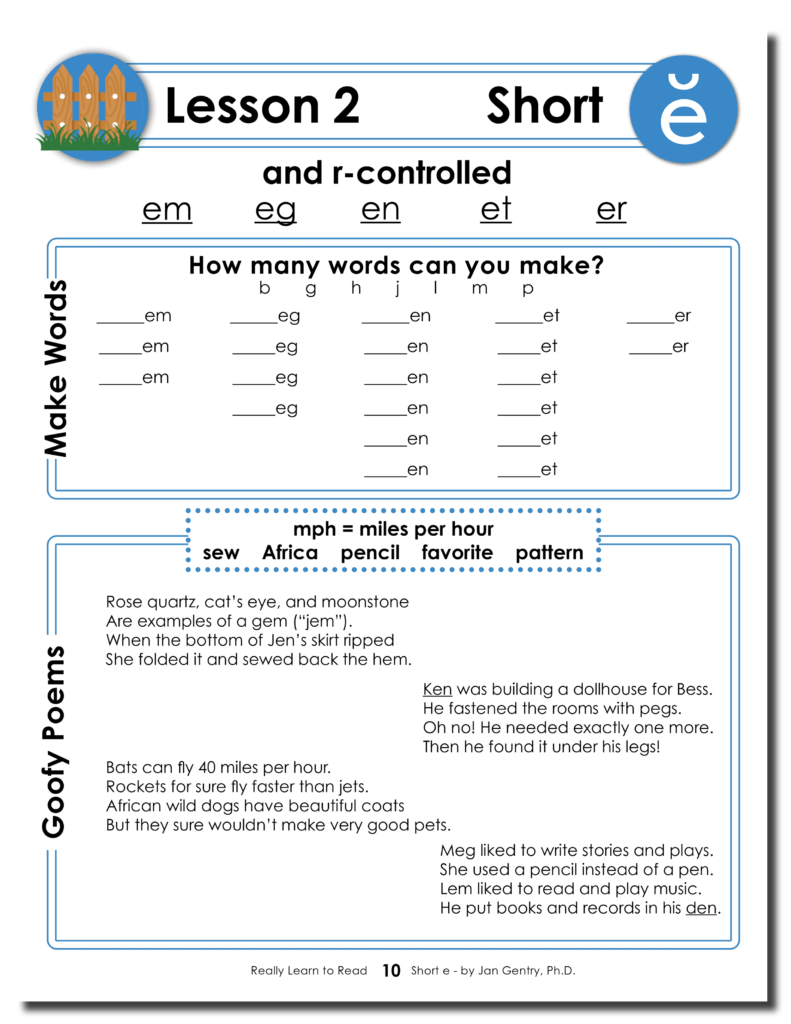
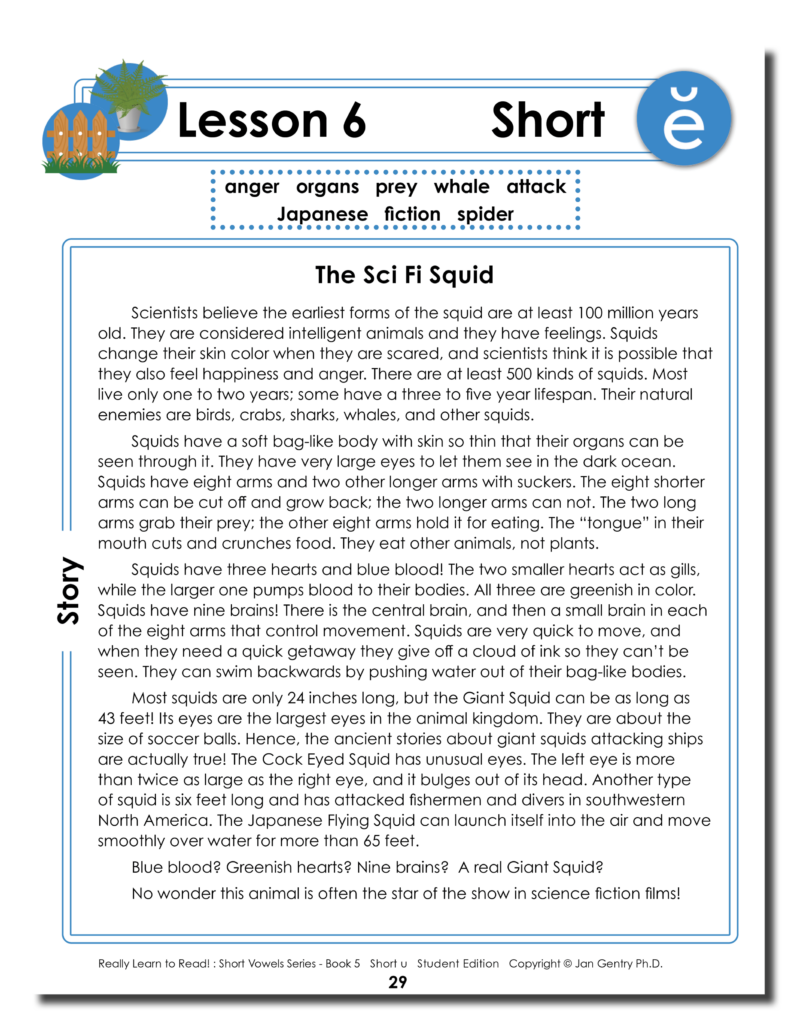
Story
All stories in Book 5 are true! After learning new sight words in a dotted box, readers will enjoy interesting and unusual facts about animals, science, history, significant people, and important events. These high-interest stories contain informational text meant to give instruction and introduce more specialized vocabulary that is specific to the subject matter. Fluency with practice reading short e families, sight words, and specialized vocabulary enhances reading comprehension of these more complex concepts. The sometimes strange but true stories will spark a reader’s curiosity to want to read more factual text found in different genres.
Question & Answer
After every poem and story, readers complete various types of activities to strengthen newly acquired skills. Activities and question formats include true & false, multiple choice, short answer, fill in the blank, and matching. These structured activities and questions prompt background knowledge, application to real life, critical thinking, drawing conclusions, and using references. This requires readers to comprehend the informational text, grasp technical vocabulary meaning, and clearly express their responses in writing. Readers will practice the skills of recalling details, acquiring new vocabulary, finding facts, drawing conclusions, using context clues, sequencing, making inferences and predictions, and using references. Deeper thinking is encouraged as readers summarize, develop analysis skills, judge text meaning, question the author’s purpose, and form an opinion about the importance of the text.
Draw a Picture
After completing the Question & Answer section after the story, a box with directions for what to draw is a fun and meaningful activity. Story comprehension and the ability to create mind pictures while reading are demonstrated in the reader’s drawing interpretation of scenes, characters, themes, or details. Some directions simply promote interest and curiosity, such as using resources to find, copy, and color a picture.
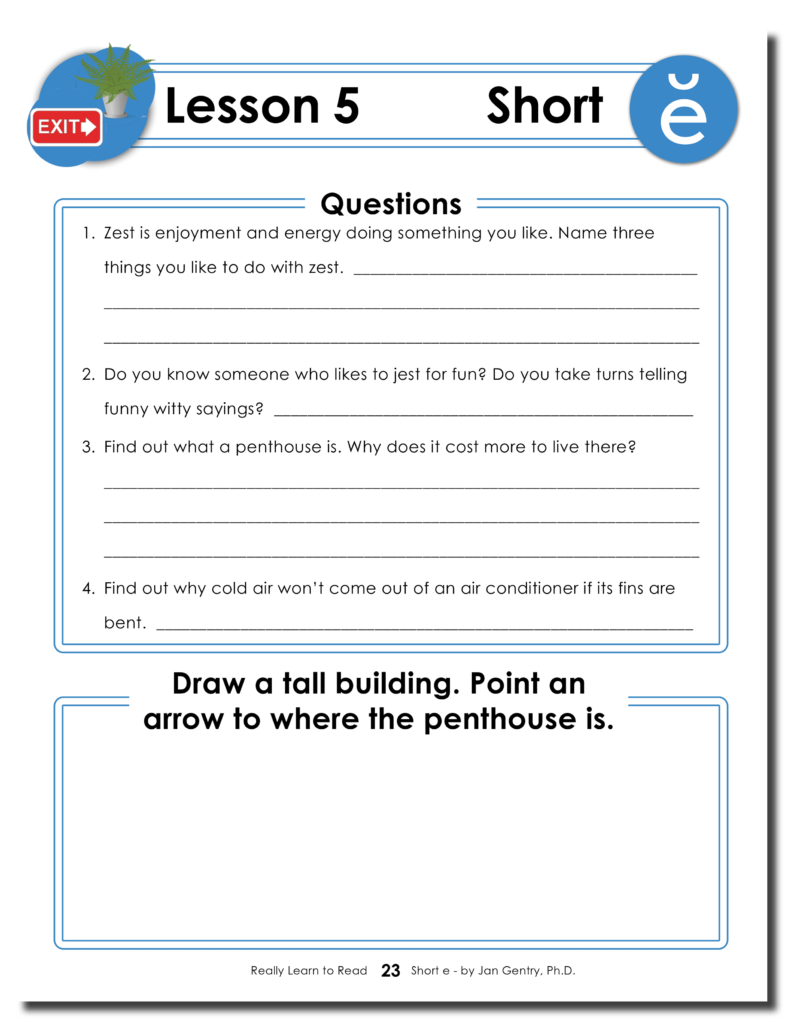
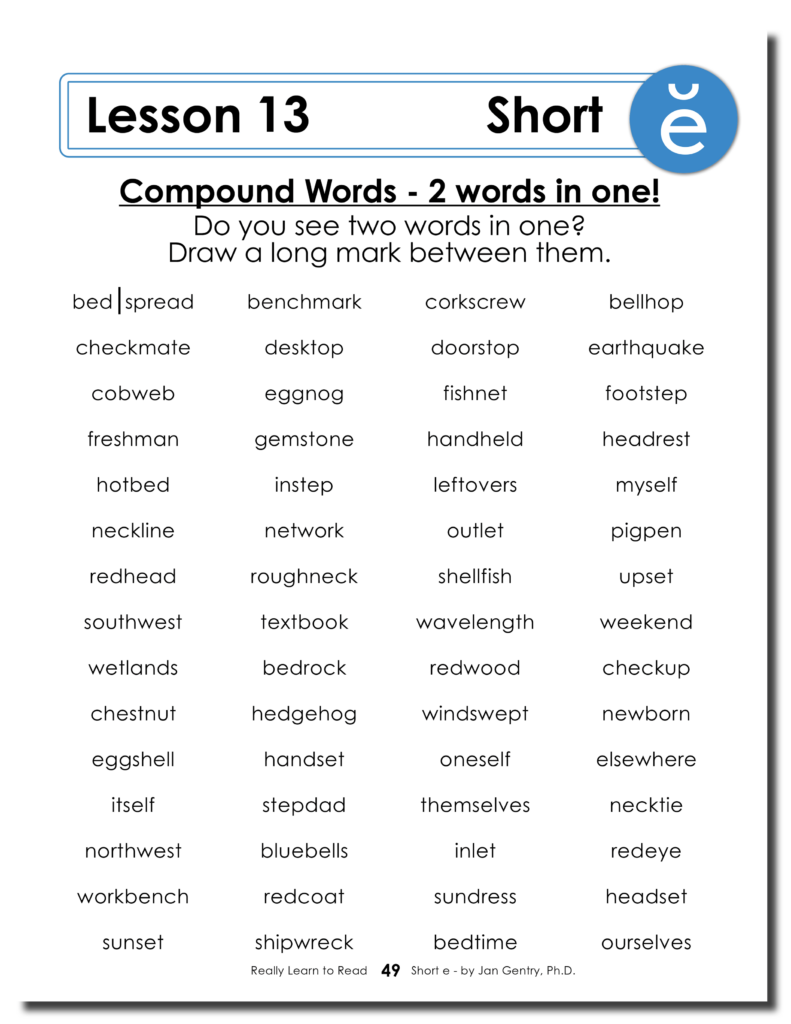
Compound Words
An enrichment skill activity at the end of the Short e workbook is recognizing a variety of compound words and drawing a line between the two words. A compound word has a new special meaning when two smaller words are combined! This hands-on activity improves interpretation of words and overall comprehension, reinforcing the skill of reading frequent multi-syllable vocabulary words found in informational text. This is a fun activity that encourages learners to independently and creatively combine two nouns to form a new compound word, thus improving their language proficiency and writing skills.
Identifying Antonyms
The final enhancement game is the hands-on activity of drawing lines to connect words with opposite word meanings. Knowledge of antonyms improves comprehension, expands vocabulary range, and develops critical thinking skills. This fun but valuable activity enhances learners by building background knowledge, determining word associations, and realizing that words can have multiple meanings and spellings.
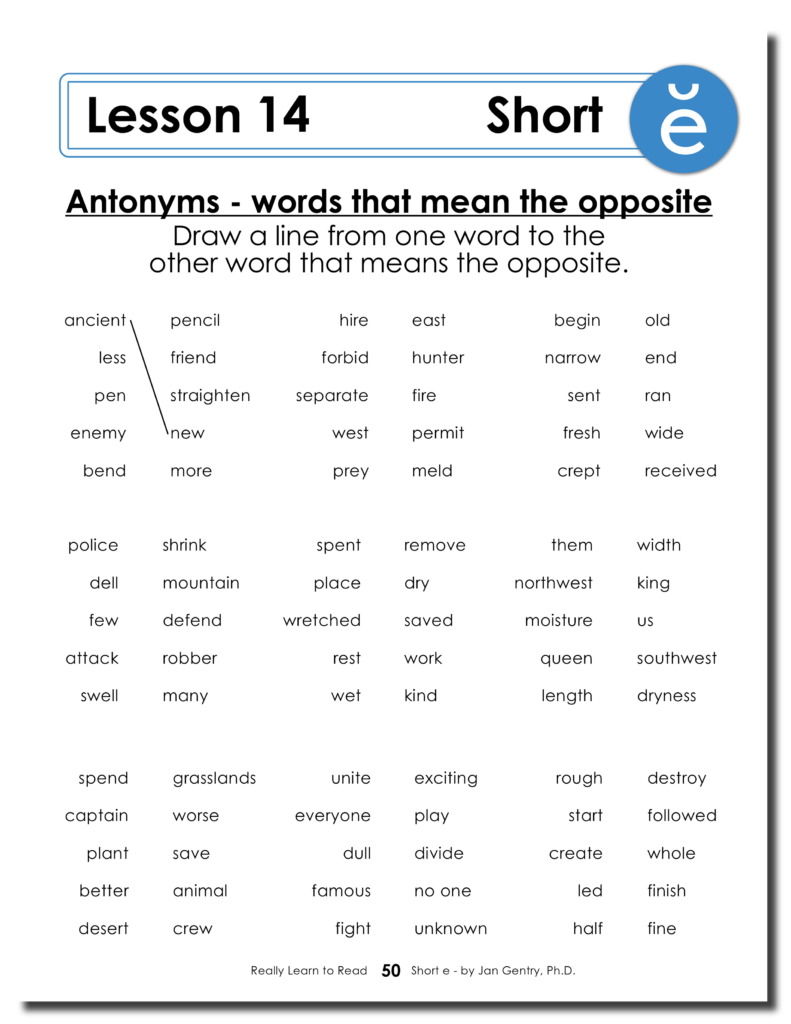
Teacher Edition
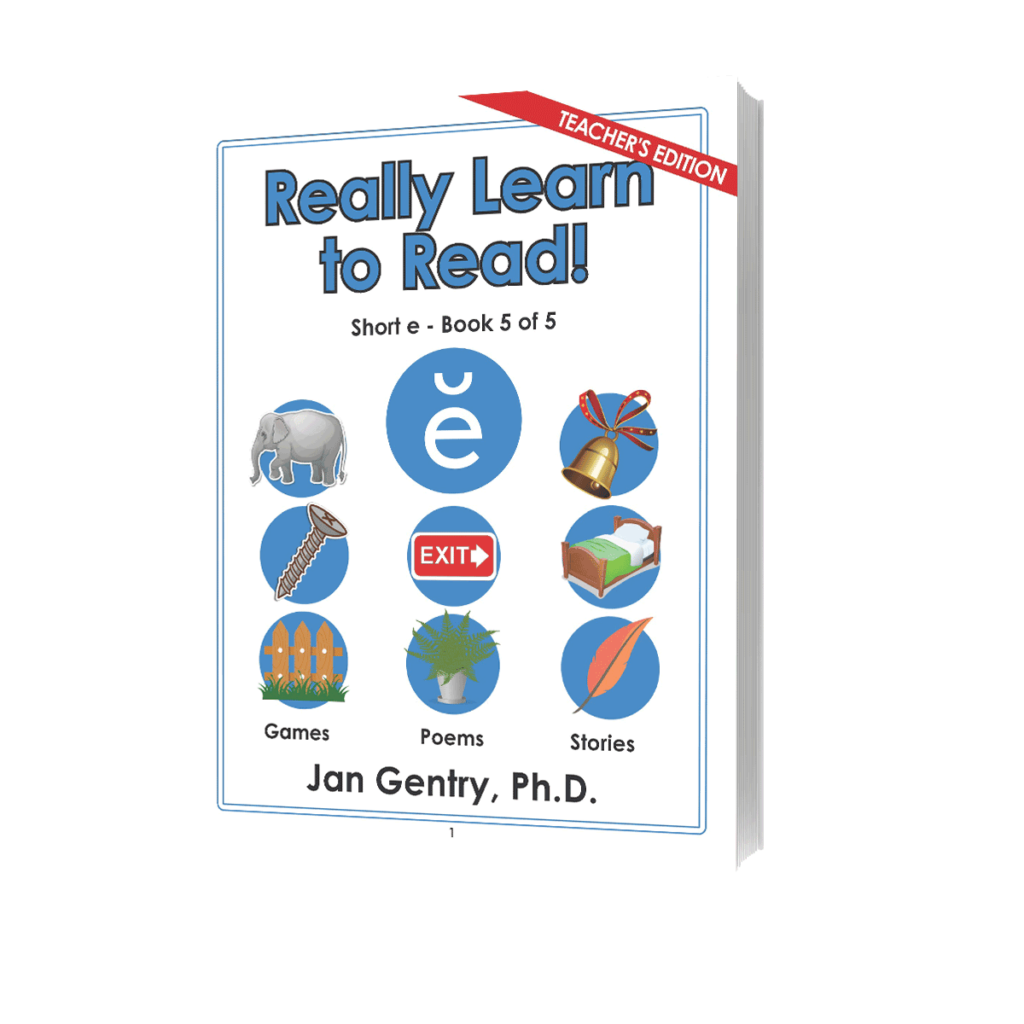
In addition to the Short e – Book 5 for the student, the Teacher Edition book includes:
- Quick Reference Guide to help quickly target specific areas of attention
- Answers to questions and activities in each lesson, written in red for easy recognition
- Phonics and Decoding Skills listed in specific detail for each lesson
- Reading Comprehension Skills listed for each question in the poems and stories
This edition provides the reading instructor with a thorough, systematic, well-defined, and successful phonics curriculum.
Answers
The Short e Teacher Edition, identical to the student’s copy, provides answers that are displayed in red print for easy reference. The evaluation of a student’s strengths in phonics and decoding skills, vocabulary, comprehension, and spelling is simplified in this format. For some questions and activities, multiple answers are conveniently provided for teachers so to give positive reinforcement to various responses that are personal, opinionate, creative, and correct.
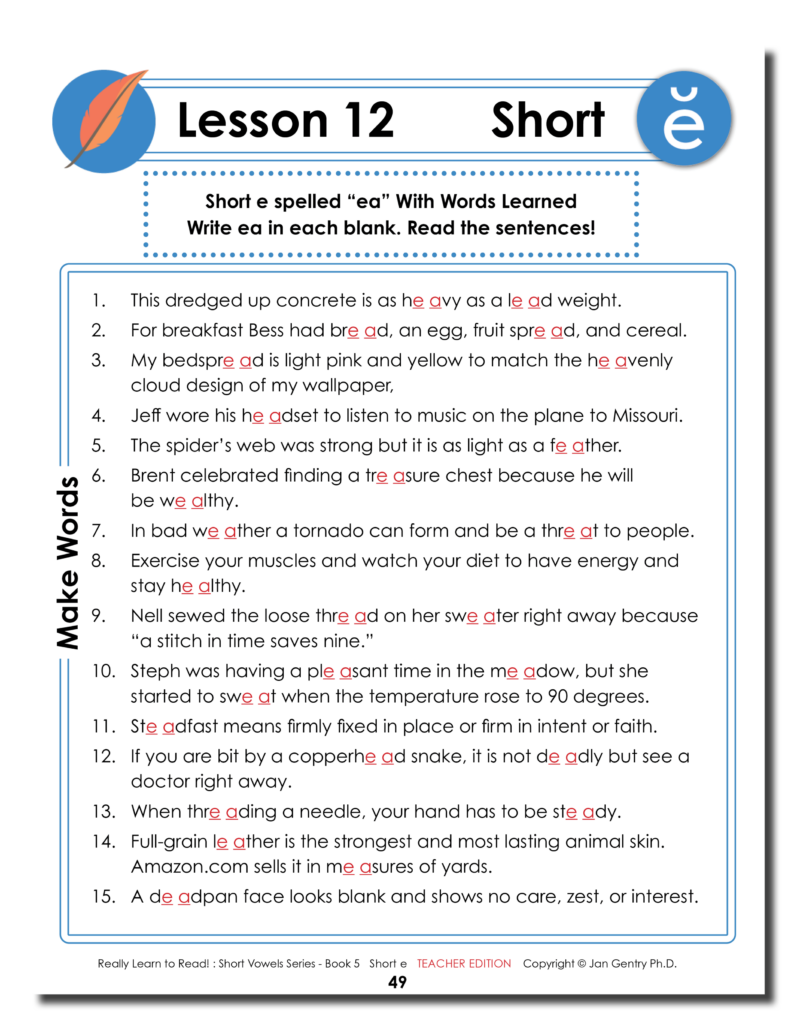
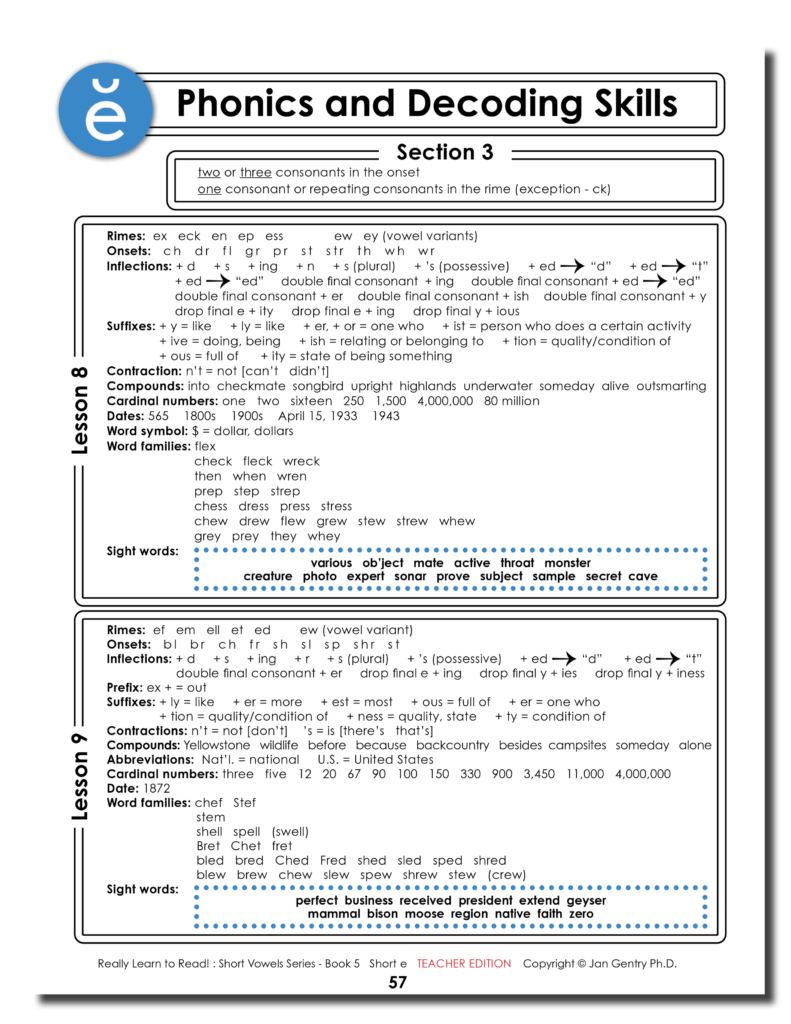
Phonics and Decoding Skills
The Phonics and Decoding Skills section provides teachers with a straightforward, detailed list of all reading, vocabulary, and other literacy skills found in each lesson: short e word family endings (rimes), beginning sounds (onsets), inflections, prefixes and suffixes, contractions, compound words, abbreviations, cardinal and ordinal numbers, fractions, dates, idioms, word symbols, short e word families, and sight words. This condensed list format allows teachers to easily assess skills to prepare for instruction, or readily determine those skills the learner has mastered or require additional practice.
Reading Comprehension Skills
The Reading Comprehension Skills section is an important reference tool in simple table format that allows teachers to trace each question and activity in a lesson back to its skill objective. Skills needed for success in comprehending informational text include background knowledge, application to real life, using references, vocabulary knowledge, drawing conclusions, using context clues, and awareness of informational text structure. Reading fluency is vital for the learner to entirely focus on understanding and connecting specific content information that is intended for instruction.

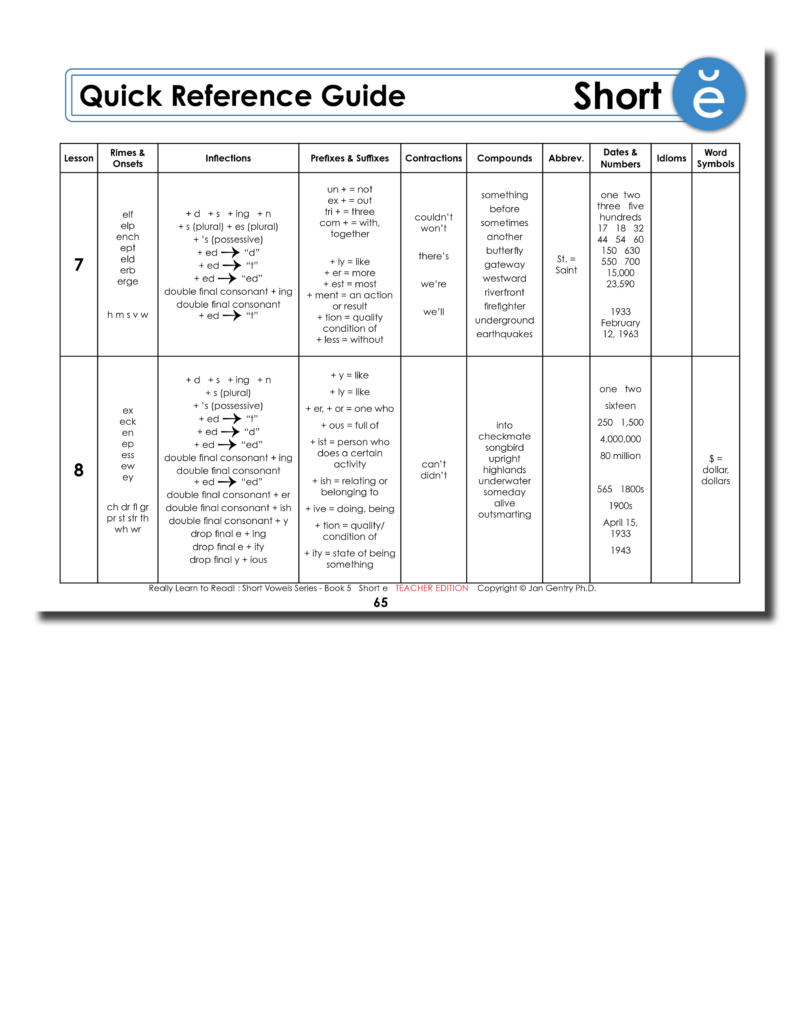
Quick Reference Guide
The Quick Reference Guide provides teachers a convenient chart format for readily identifying all skills in each lesson. The skill categories include rimes and onsets, inflections, prefixes and suffixes, contractions, compounds, abbreviations, dates and numbers, idioms, and word symbols. This reference guide is ideal for teachers to highlight the skills to be learned, as well as to note the skills requiring review and practice.
Order Today
Each book is available individually, or as a set with the other books in its series. You can choose Paperback or Portable Document Format (PDF) versions. The convenient PDF allows immediate download so teachers can tailor lessons to their students’ needs by printing specific sections at a time. A Teacher Edition is also available (PDF Only) to provide the reading instructor with a carefully designed, systematic, true phonics-based curriculum.
